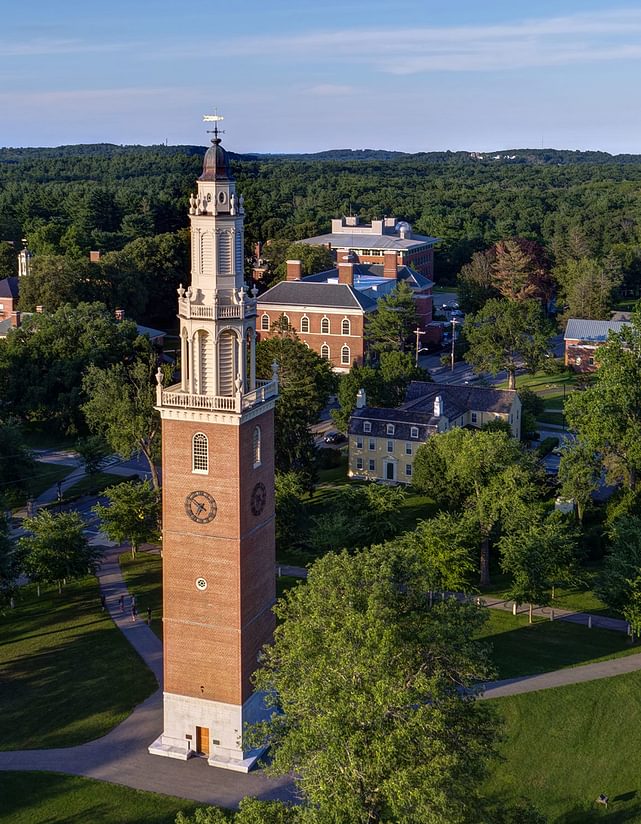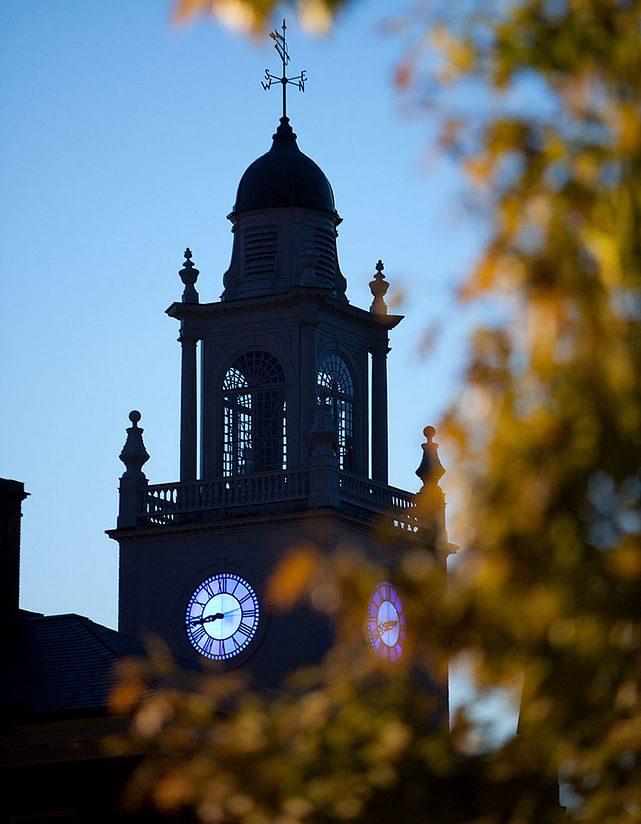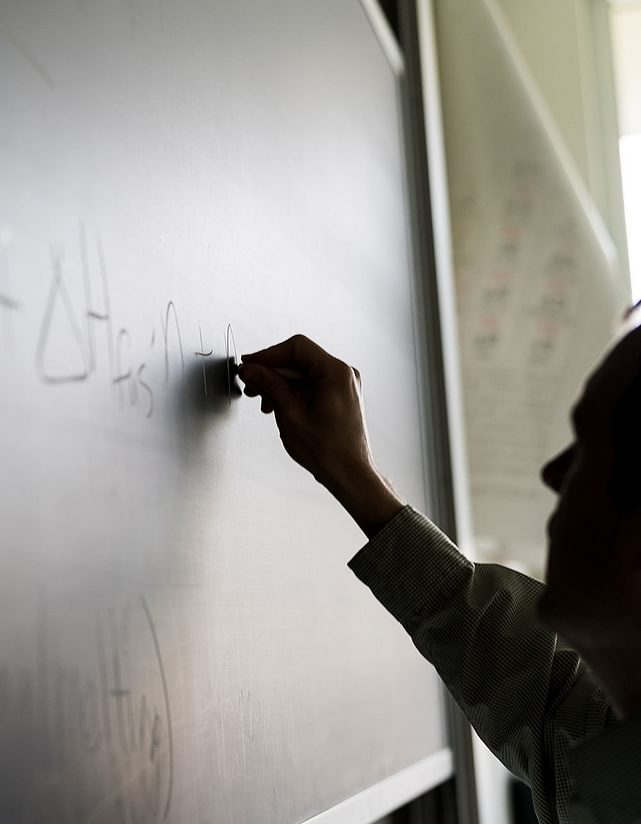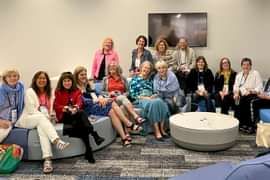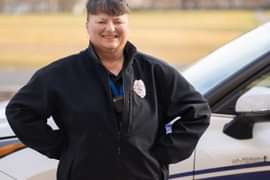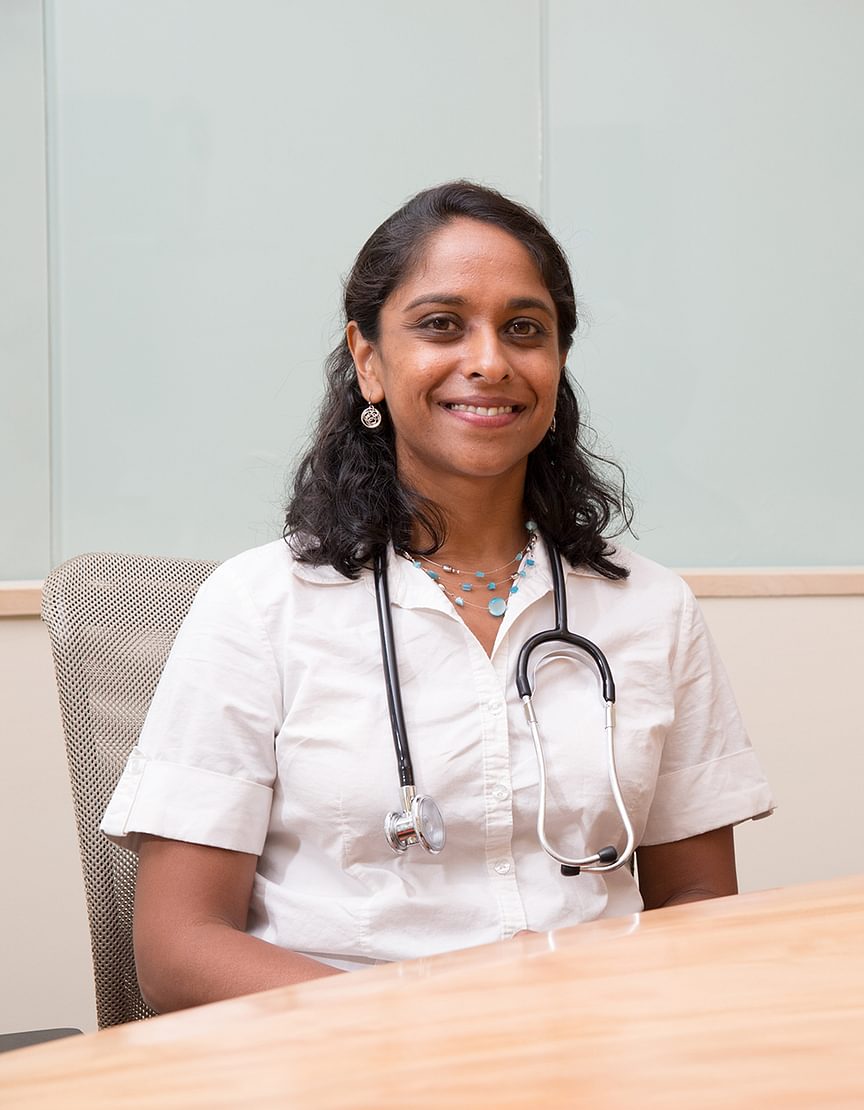
May 22, 2020
Practicing wellness from afar
Q&A with Amy Patel, medical director of the Sykes Wellness Centerby Allyson Irish
You may think that a boarding school campus without students means the health center staff has nothing to do. That would be wrong. Dr. Amy Patel and her colleagues at the Rebecca M. Sykes Wellness Center have been working hard this spring to roll out a series of new digital health initiatives, all while ensuring that students and families— wherever they are in the world—have access to the health care they need, In the following Q&A, Patel talks about the changes to her work due to the COVID-19 pandemic and what she anticipates may happen when students eventually return to campus.
Let’s go back a few months ago. When do you recall first hearing about COVID-19?
It was early to mid-January when we started to have reports of what at that point we called the novel strain of coronavirus. It was about two weeks after students returned [from winter break] that it became something to really assess for our campus, to consider contact tracing and contact exposure and then plan for any potential exposures for the upcoming spring break.
In mid-January, we realized that we needed to assemble a small group to think about what to do for campus infection prevention. At that time, we focused more on containment because the virus was still considered a limited threat. But once we began to see that the exposure was becoming more widespread, we really started to think about what our response and prevention plan was going to look like.
At first, we were following some of the other procedures we had developed and used in relation to other exposures, such as prior bad flu seasons and when we prepared for Ebola and even EEE [Eastern Equine Encephalitis] last fall. We were following guidelines from the World Health Organization and the Centers for Disease Control and Prevention, which were really the only ones providing any guidelines and information early on. We were more concerned for our international community because the virus seemed very isolated by all accounts available. Nothing was suggesting at that time that we would need to ramp up to where we are now.
What kinds of health and wellness information are students and parents asking for?
Initially, when the decision was made to close the campus and resume the spring term virtually, our first priority was to ensure a seamless handoff in terms of making sure that students had access to the medications they needed and to health care providers for continuity of care. We don’t provide telemedicine, so we wanted to make sure the supports were there. We were in touch with more than 300 families to make sure there was a good plan in place and to use our networks to connect people with health care providers, wherever they are worldwide. We also assisted with health insurance to make sure students and families understood what coverage they had. This was especially important for our international students and families.
Now I’m seeing that families are asking for help about how best to support their students through this. How do families help keep their students engaged academically?
We are providing resources to help students and families keep their general spirits up, and to manage stress. These are all elements of healthy lifestyle behaviors, and I’m finding this is really a shift. Students and families are more interested in this information now, especially as we get further into the spring term and into this quarantine. People are starting to get quarantine fatigue and these simple lifestyle behaviors are going to become even more important.
I’m very excited to be engaging with students in a different, virtual manner. We’ve had a really fun time shifting the content we normally deliver in person. This has been a great way to connect with kids.
”With no kids on campus this spring, what are some of the new challenges you are facing at the Sykes Wellness Center?
We are realizing that there is still so much that can be done. It requires a lot of flexibility and thinking about how we can continue our focus on health and well-being for students and families in this new environment.
There is still a lot of education and resources we can provide so [students] continue to stay well. Prevention has been more important. When students are on campus they are coming in, generally, when they are not feeling well. So we are treating a problem. We have been moving toward more of a lifestyle medicine or preventative medicine approach, and now that has been accelerated.
What does the lifestyle medicine/preventative medicine approach entail?
Lifestyle medicine is considered a cousin of preventative medicine. It is based on six principles: proper nutrition, physical activity, managing stress, avoiding substance use, improving sleep, and forming and maintaining healthy relationships. We want to offer really consistent communications for our student and families, adult community members, and employees that are based on these six principles. We are not creating something new here, but applying these principles and concepts across multiple audiences and using some new and different platforms, for example social media. This approach also includes having content that applies consistently to different audiences.
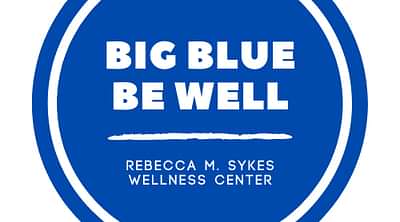
What is the “Big Blue Be Well” initiative?
This initiative is really about being connected to the community and focusing on these very tangible lifestyle principles and behaviors. It’s about being able to leverage some of the common communications tools that we already have as well as using newer digital tools, for example our Instagram account. We are looking to make this fun and to create challenges that highlight a lot of the ways our community is practicing these principles and staying healthy. And we wanted to do this in a way that is new and exciting—and long-lasting beyond COVID-19.
How are you thinking about new and different ways to address health and wellness when the campus opens again?
It’s been awesome to work with the medical team to make sure we are staying on top of all the data and finding different ways that we might infuse this information into our health and wellness initiatives. This has provided us with an opportunity to accelerate some of the programming that we had been planning to do and infusing it directly into our care delivery model.
Before, we relied on face-to-face encounters in every aspect of care. Now we are engaging with students in a virtual way and I think we might be able to borrow some of these models that we are using now, as well as elements of telehealth in some ways. Our current model is still very reactive. People are not coming to us generally saying, “I’d really like to promote my health.” They are coming to us if they have an illness. I’d like to look at this as an opportunity to embed some of the lifestyle medicine principles so that every time a student comes to us, we can remind them of these other important pieces of information that can help them feel better. So yes, we will still provide medication and treatment for illness and injury, but we can also focus on helping students consider immune-supporting foods and how to manage stress. We are building connections that will extend beyond this pandemic and also promoting tools for a healthier lifestyle.
What are you and your family doing to stay to safe and healthy during this time?
I am doing everything I can to physically distance. I miss people outside of my immediate family, and yet I know that consistent physical distancing and staying home as much as possible right now are the best ways to flatten the curve and ultimately keep more people safe and healthy. We have been exercising as a family, enjoying the outdoors when we can, and challenging ourselves to increase flexibility and strength. I have been doing yoga “with” a friend, my husband is working on a handstand challenge, my daughter is doing Zoom conditioning workouts with her gymnastics team, and my son is working out with his soccer team on Zoom. We are also doing a lot of cooking, using whatever we have on hand. I like to think of myself as a pantry cook; I never quite have the exact ingredients for anything, but I improvise well with whatever is in the pantry! We are getting good sleep and trying to keep ourselves to a routine and schedule. And we are finding ways to continue to connect with family and friends through virtual platforms.
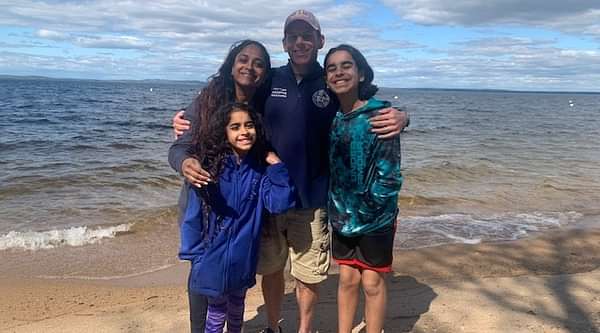
Is there anything else you’d like to share with the Andover community?
We are all going through our range of responses to this pandemic. Please remember that you are not alone. Reach out to someone if you are struggling. I know that quarantine fatigue is setting in, but we must stay strong and continue to follow public health guidance. Continue to find the silver linings and make lemonade out of lemons, as the saying goes. We will be on the other side of this, and we will be a stronger community because of what we are going through right now.
